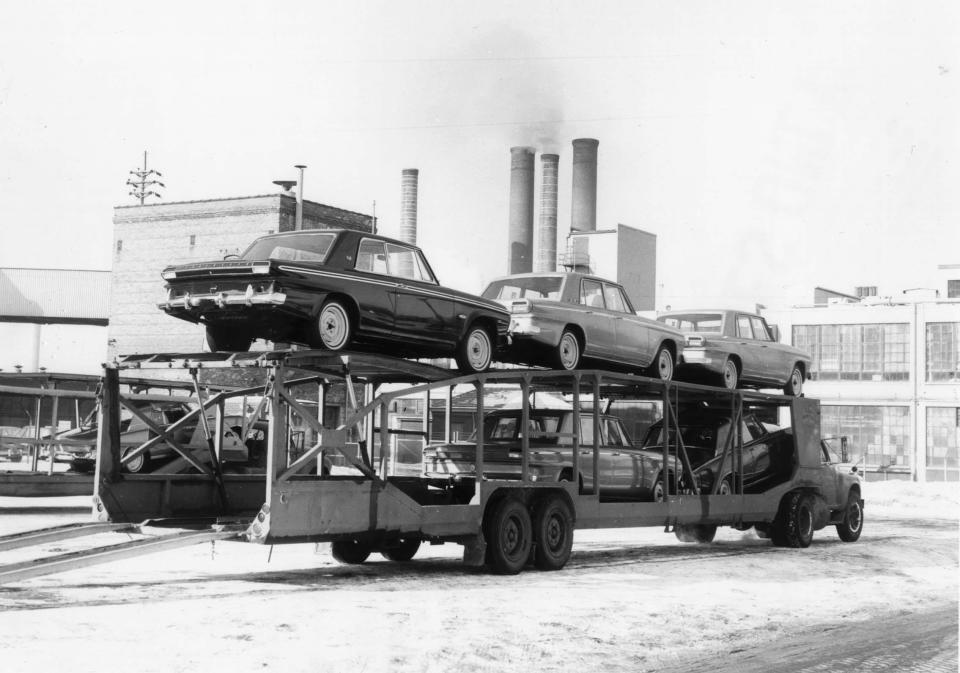Colwell: Overcoming despair, finding hope in post-Studebaker South Bend
As they hurried through Gate 1 on Sample Street at the end of their shift, on that afternoon of Dec. 9, 1963, Studebaker workers didn’t yet know the news.
Then they saw it.
In that “Read-all-about-it!” era of newspaper street sales, carriers of The Tribune, then an afternoon newspaper, displayed copies just off the presses with the jarring headline that auto output was ending in South Bend.
Since I wrote the story breaking the news, the bad news that Studebaker wouldn’t yet confirm, I remember well the reaction.

Initially, for many of the workers, there was disbelief. Studebaker had always been here. Since long before they were born. For 111 years, producing farm wagons, then wagons settlers took to open the West and then autos for 61 years.
In the community, there were expressions of hope and despair.
Hope resounded in the rallying declaration of Paul D. Gilbert, owner of the area’s largest clothing store: “This is not Studebaker, Indiana. This is South Bend, Indiana.”
Gilbert was right. But it took some time, over half a century, to prove it to the rest of the nation. A steady population decline continued decade after decade, with South Bend proclaimed nationally in 2011 as a dying city.
Then the 2020 Census showed there was significant population growth in the prior decade. Pete Buttigieg, in his presidential campaign, sang the praises of South Bend progress. The national news media came to see, and most of the resulting stories were positive.
60 years later: Rebirth in Studebaker corridor evolved from painful time for South Bend
Now, we see more developments downtown and elsewhere in the city and welcome the news of a $3.5 billion electric vehicle battery complex in the county.
But those in despair in the wake of the Studebaker closing had ample reason for their feelings. It was a terrible time, especially for the 7,500 Studebaker workers who lost their jobs. Also, for the thousands of others who were on layoff, hoping to be called back by Studebaker.
For all those workers the degree of despair was to change. It grew worse. They found that their pensions as well as their jobs were gone.
Their suddenly decimated finances meant that they no longer were spending as they had at stores or anywhere else locally. They couldn’t afford movies or restaurants. This brought a wave of other layoffs and business closures.
One of the worst results of the despair was recorded in Tribune obituaries. An obit would tell of the death of a former Studebaker worker, say around 55 years old, with no cause of death listed. Those who knew the despair of that person — with no job, no pension, no hope — knew of or guessed at the cause. The precise suicide toll is uncertain.
Yet, amid all this, hope survived.
So did determination to prove the national critics wrong in their projections that grass would grow in the streets of South Bend.
Potholes, yes, after a harsh winter. Never grass.
In fact, one response was a widespread street paving program in the administration of Mayor Lloyd M. Allen, who had been elected just a month before Studebaker’s decision.
Other mayors over the decades fought for projects to reject despair, to improve the city — Century Center, East Race Waterway, a first-class baseball stadium. Those and other projects often faced fierce opposition from citizens with a “can’t do” attitude. They were dispirited, pessimistic. Could South Bend really afford to do anything? And, anyway, would such projects have any chance for success here?
Hope prevailed in approval of those and other significant improvements that kept the area viable until the time when opportunities and a “can do” attitude would project a brighter future.
There no longer was Studebaker. There always still was Notre Dame. More manufacturing jobs were vanishing as they did also in other Midwest “Rust Belt” cities. But there has been growing diversity in employment. There always was hope. Finally, it overcame despair.
Jack Colwell is a columnist for The Tribune. Write to him in care of The Tribune or by email at jcolwell@comcast.net.
This article originally appeared on South Bend Tribune: Finding hope after Studebaker's closing in South Bend 60 years ago

